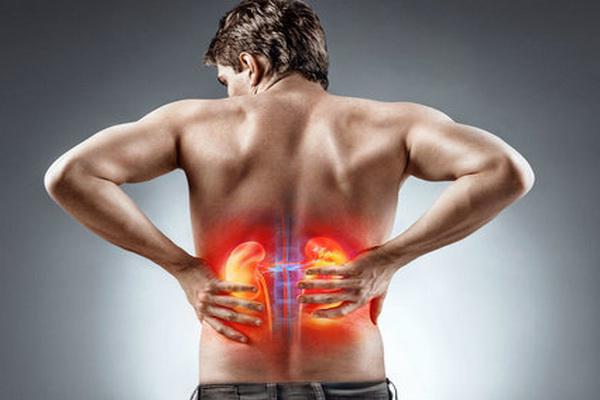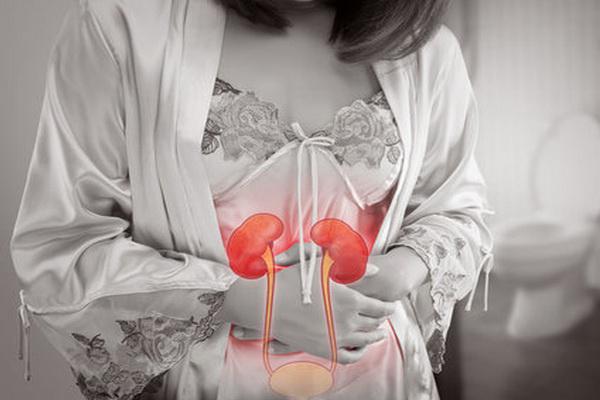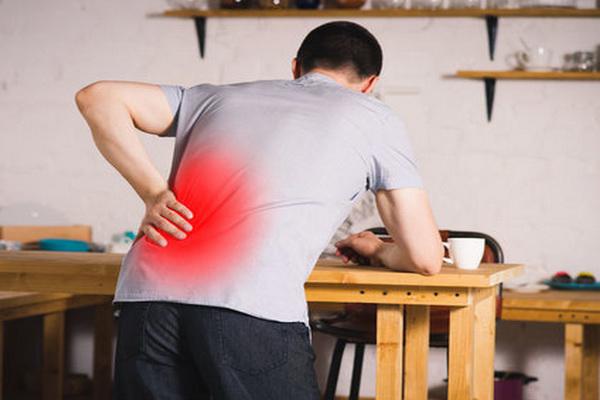Зміст
The kidneys are a very important organ in our body that performs many functions. They produce urine and act as a filter that helps remove toxins and waste products. When they fail, they can lead to serious disturbances in our body, but the first symptoms of their malfunction are very difficult to detect.
Kidney pain usually begins when there is a serious problem with this organ. It is also a nonspecific ailment because it occurs in the lumbar region, so it is often impossible to tell if you are suffering from kidney or back pain due to spinal degeneration. Therefore, it is important to find out the cause of the pain as soon as possible, as kidney symptoms can indicate serious conditions such as renal colic, cyst, or hydronephrosis. So how do you recognize kidney pain and find out its source? How to distinguish kidney pain from back pain?
How to distinguish kidney pain from back pain?

Kidney disease can be mild for many years, and the first symptoms are subtle. Kidney pain usually appears only with significant disabilities and late stage of the disease. It is often mistaken for back pain due to back problems. It can be located in one place – in the lumbar region on both sides of the spine. So how can you tell these ailments apart?
Back pain is usually dull and uniform, starts mild and gets worse with progressive degeneration or deformity of the disc. This usually manifests itself in certain situations, for example, after prolonged standing or sitting, after physical exertion or a long stay in one forced position. Back pain is chronic and long-lasting. It starts in the middle and diverges vertically along the spine – up and down. Usually not accompanied by other symptoms and does not worsen with pressure. In exceptional cases, in the event of an injury or a prolapsed intervertebral disc, it can be so painful that it becomes impossible to adopt the correct posture and causes symptoms such as dizziness, vomiting or fainting.
How does kidney pain manifest?
With kidney problems, pain is usually sudden, sharp, and shooting. It can be pulsating and varying in intensity – it temporarily gives you a break and comes back again. It happens that it begins smoothly and gradually increases, continuing for a long time. Then it is a chronic kidney pain known as somatic pain. The pain starts on one or both sides of the spine and spreads horizontally to the other kidney, groin, or abdomen.
Kidney pain occurs due to pressure and urinary retention and will go away when the cause is corrected. Illness is accompanied by soreness of the kidneys, which increases pain when touched. In addition, many symptoms appear: problems with urination, discoloration and odor of urine, pain and burning sensation in the lower abdomen, fever, nausea, vomiting,
Causes of kidney pain. Renal colic
One of the most common kidney diseases is kidney stones, which are caused by the buildup of insoluble deposits in the urinary tract called kidney stones. It can be asymptomatic for many years, and smaller stones can be cleared without any discomfort. When they grow, however, they can block the ureters, and residual urine causes a sudden increase in pressure in the urinary tract. Then there is an attack of renal colic, which is manifested by severe, acute and acute pain in the kidney area, radiating to the groin in the direction of the bladder and urethra. It is accompanied by symptoms such as severe pressure on the bladder, frequent urination in small amounts, hematuria, fever, vomiting, and a drop in pressure.
Kidney pain: Nephritis
Inflammation of the kidneys can also indicate pain in the lumbar region. There are three types for different reasons. Glomerulonephritis is usually caused by bacteria and viruses and develops one to two weeks after infection. Initially asymptomatic, there may be back pained, discoloration and problems with urine passing, swelling of the face and legs, symptoms of high blood pressure, and sometimes fever.
Interstitial nephritis is caused, for example, by taking certain medications (antibiotics or non-steroidal anti-inflammatory drugs), infection, or sarcoidosis. There is a dull pain in the lumbar region, oliguria and hematuria, fever, skin rash or joint pain.
The most severe course is acute pyelonephritis, caused by the bacterium E. coli. It manifests itself as severe back pain, high fever and chills, nausea, vomiting, burning sensation when urinating, painful urge to urinate, and hematuria. This is a very serious condition as it can lead to kidney failure.
Kidney pain: Kidney cyst

Pain can also be caused by a kidney cyst, a water-filled bladder that appears in the parenchymal of this organ. Small cysts usually do not cause any symptoms, but if they are more than 5 cm in diameter, they can cause pain in the kidney area, a feeling of bloating and pressure in the abdomen, and gastrointestinal distress such as nausea. Small cysts can be controlled, and large cysts should be removed.
Hydronephrosis
Pain can also occur when urine accumulates in the kidney due to its obstructed outflow, the so-called hydronephrosis. It usually grows gradually and is asymptomatic, but it can also cause symptoms such as dull back pain radiating to the symphysis or testicles, nausea, vomiting, difficulty urinating, and bloating. Restricted urine flow can be caused, among other things, by kidney stones, aortic aneurysm, iliac artery aneurysm, or an enlarged prostate.








